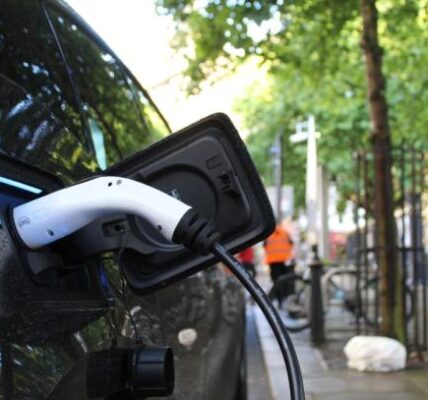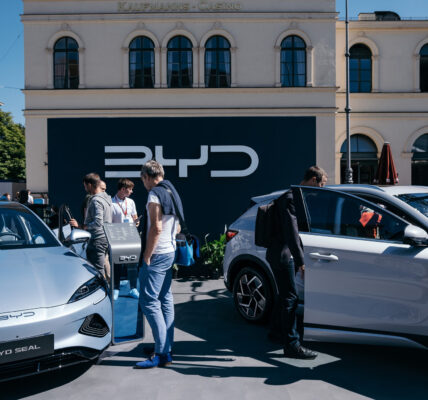KOP’s InductEV Is Making Electric Vehicles More Efficient Through Autonomous Wireless Chargers
You might’ve seen people charge their iPhones with wireless chargers, but imagine applying that concept to charging your car.
InductEV, a company that builds autonomous wireless chargers for electric vehicles, is developing that future. The company’s chargers are installed on top of the ground, so electric vehicles just need to park on the panels to charge, said Anthony Calabro, chief product officer at InductEV.
It’s a growing company in a growing market: EV sales grew from 0.2% to 4.6% of all car sales in the US over the decade preceding 2021. The federal government is even getting in on fueling the industry.
InductEV launched in 2010 in Malvern under another name, Momentum Dynamics. Calabro told Technical.ly, when he started working for the company in 2014, the team was mostly doing custom products for clients who approached them. In 2017, the company started working commercially in the transit market.
Over the years, the company’s leadership realized they could meet most of their clients needs with a single product. InductEV is currently on the second generation of its product and developing a third generation, Calabro said.
Barry Libert, chairman and CEO, said the company offers three things. One is hardware — “high-powered wireless charging for the commercial world.” The second is service, and the third is AI, specifically “artificial intelligence recommendation engines for route optimization and energy management.”
The tech works by way of a ground system creating a magnetic field and a component that goes on the vehicles to receive energy from the magnetic field.
“And then we have telemetry and data going back up to our servers. So the capabilities with all that telemetry and data, we can do distributed energy management,” Calabro said. “Giving your operators the capabilities to charge throughout the day through very intelligent energy management solutions reduces your total operating costs for your vehicle, reduces the total fleet costs as well.”
If buses are waiting to go back out on their route or waiting in a turnaround spot, for instance, they can park and charge during that time.
InductEV works with public and private transit systems that use electric vehicles, as well as with companies that have trucks and other large vehicles that need to travel long distances for long periods of time. The company has systems set up in cities across the US and in Europe.
“We can charge them in the background, we can reduce their vehicle cost, we can make sure they’re not over putting battery on that vehicle,” Calabro said. “And we’re continuing to keep those vehicles’ utilization very high and their uptime very high so they don’t have to take time out of their day to go charge.”
InductEV opened a new R&D center in King of Prussia earlier this month, expanding from a 15,000-square-foot space in Malvern to now 50,000 square feet. This new hub will accommodate the company’s 65 hybrid employees and provide plenty of lab space, inventory and manufacturing space.
The company confirmed that it raised a $19 million round in May, but declined to provide further details.
One focus of InductEV as it continues to develop its technology is sustainability and green energy. Calabro said advancing electric vehicles reduces the amount of vehicles operating. He said the company is also thinking about the size of the batteries and how they can be more efficient when creating electric vehicles.
“You’re really balancing out the need for the size of the battery with the capability to be charging intermittently throughout the day,” he said.








